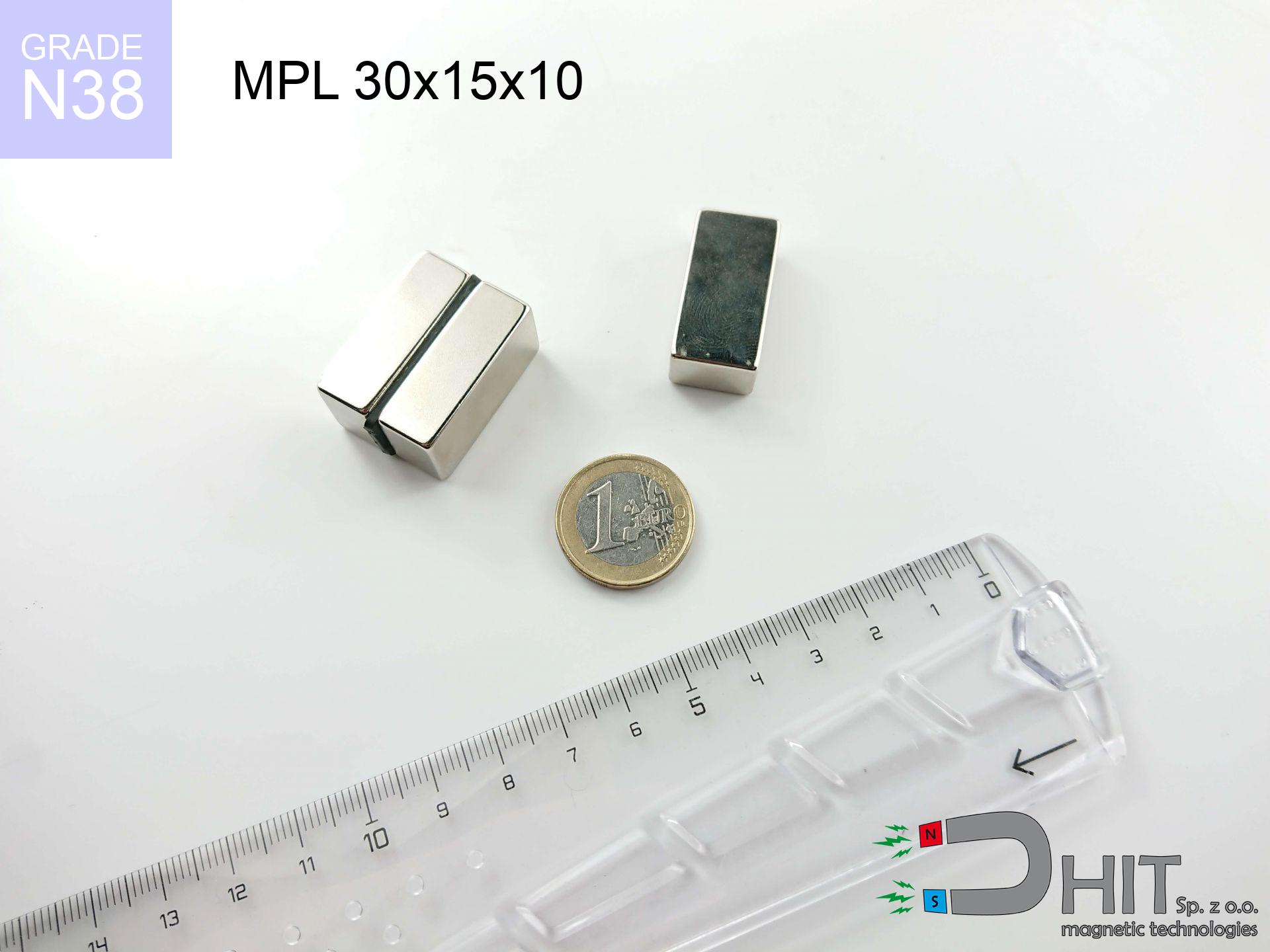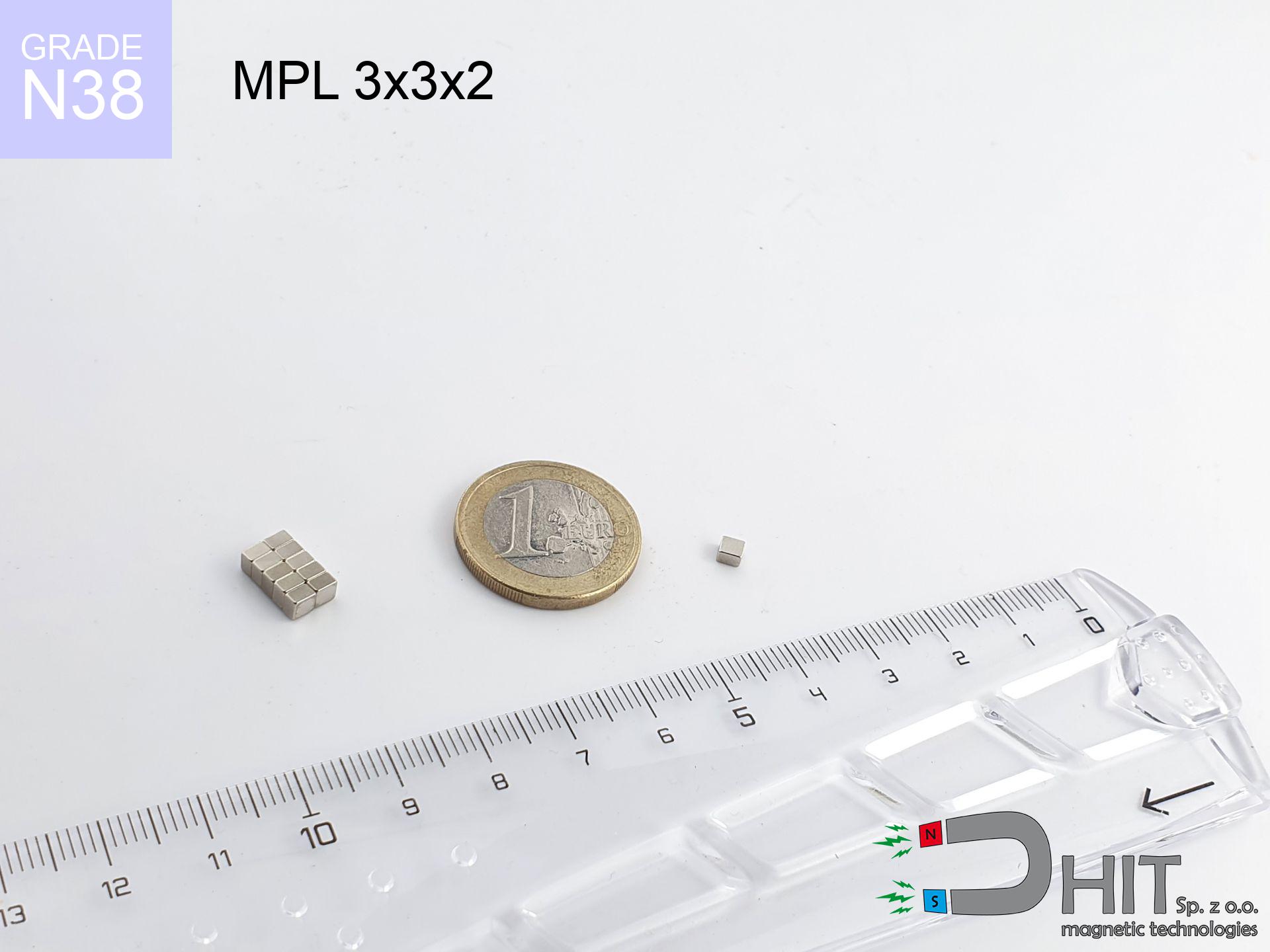UMP 65x45 [M8]x2 GW / N38 - search holder
search holder
Catalog no 210348
GTIN/EAN: 5906301813996
Diameter Ø
65 mm [±1 mm]
Height
45 mm [±1 mm]
Weight
1170 g
Load capacity
230.00 kg / 2255.53 N
Coating
[NiCuNi] Nickel
150.00 ZŁ with VAT / pcs + price for transport
121.95 ZŁ net + 23% VAT / pcs
bulk discounts:
Need more?
Call us now
+48 888 99 98 98
or send us a note by means of
inquiry form
our website.
Lifting power as well as form of a magnet can be reviewed with our
online calculation tool.
Orders submitted before 14:00 will be dispatched today!
💡 Guide: How to choose a decent magnet and not get ripped off?
Don't be fooled by amateur online tests – go for certified quality and specific parameters that guarantee success:
- 📏 Magnet thickness in the casing (min. 10mm) – This is what matters most! Thin magnets are weak. Thanks to the 1cm thickness of N52 neodymium, your magnet "sees" metal even through thick rust and mud.
- 🛡️ Armored protection (Black Epoxy) – Forget about rust. This coating doesn't chip when hitting rocks and protects the magnet in water much better than regular nickel, which fails quickly.
- 🧲 Eyelets that don't steal power – Made of special non-magnetic steel, so they don't stick to the magnet and don't block the force. Important: mount only one eyelet at a time! Using 3 at once is a mistake that weakens the magnet.
- 🧶 Certified rope (min. 8mm) – You gain the certainty that your gear won't stay at the bottom. It's thick and comfortable, so it doesn't cut your fingers when pulling out heavy scrap metal.
- 🚀 Our advantage: We are the only ones combining the strongest N52 neodymium (10mm thick) with non-magnetic eyelets. This is real power and durability you won't find anywhere else.
Invest in solid equipment and enjoy the results!
Technical specification of the product - UMP 65x45 [M8]x2 GW / N38 - search holder
Specification / characteristics - UMP 65x45 [M8]x2 GW / N38 - search holder
| properties | values |
|---|---|
| Cat. no. | 210348 |
| GTIN/EAN | 5906301813996 |
| Production/Distribution | Dhit sp. z o.o. |
| Country of origin | Poland / China / Germany |
| Customs code | 85059029 |
| Diameter Ø | 65 mm [±1 mm] |
| Height | 45 mm [±1 mm] |
| Weight | 1170 g |
| Load capacity ~ ? | 230.00 kg / 2255.53 N |
| Coating | [NiCuNi] Nickel |
| Manufacturing Tolerance | ±1 mm |
Magnetic properties of material N38
| properties | values | units |
|---|---|---|
| remenance Br [min. - max.] ? | 12.2-12.6 | kGs |
| remenance Br [min. - max.] ? | 1220-1260 | mT |
| coercivity bHc ? | 10.8-11.5 | kOe |
| coercivity bHc ? | 860-915 | kA/m |
| actual internal force iHc | ≥ 12 | kOe |
| actual internal force iHc | ≥ 955 | kA/m |
| energy density [min. - max.] ? | 36-38 | BH max MGOe |
| energy density [min. - max.] ? | 287-303 | BH max KJ/m |
| max. temperature ? | ≤ 80 | °C |
Physical properties of sintered neodymium magnets Nd2Fe14B at 20°C
| properties | values | units |
|---|---|---|
| Vickers hardness | ≥550 | Hv |
| Density | ≥7.4 | g/cm3 |
| Curie Temperature TC | 312 - 380 | °C |
| Curie Temperature TF | 593 - 716 | °F |
| Specific resistance | 150 | μΩ⋅cm |
| Bending strength | 250 | MPa |
| Compressive strength | 1000~1100 | MPa |
| Thermal expansion parallel (∥) to orientation (M) | (3-4) x 10-6 | °C-1 |
| Thermal expansion perpendicular (⊥) to orientation (M) | -(1-3) x 10-6 | °C-1 |
| Young's modulus | 1.7 x 104 | kg/mm² |
Material specification
| iron (Fe) | 64% – 68% |
| neodymium (Nd) | 29% – 32% |
| boron (B) | 1.1% – 1.2% |
| dysprosium (Dy) | 0.5% – 2.0% |
| coating (Ni-Cu-Ni) | < 0.05% |
Sustainability
| recyclability (EoL) | 100% |
| recycled raw materials | ~10% (pre-cons) |
| carbon footprint | low / zredukowany |
| waste code (EWC) | 16 02 16 |
Check out also deals
Pros and cons of Nd2Fe14B magnets.
Strengths
- They virtually do not lose strength, because even after ten years the performance loss is only ~1% (according to literature),
- They are extremely resistant to demagnetization induced by presence of other magnetic fields,
- By applying a smooth coating of gold, the element has an aesthetic look,
- Magnetic induction on the working layer of the magnet remains extremely intense,
- Thanks to resistance to high temperature, they are capable of working (depending on the shape) even at temperatures up to 230°C and higher...
- In view of the ability of free molding and customization to custom needs, magnetic components can be manufactured in a variety of geometric configurations, which increases their versatility,
- Huge importance in modern industrial fields – they are commonly used in hard drives, electromotive mechanisms, medical devices, and other advanced devices.
- Compactness – despite small sizes they generate large force, making them ideal for precision applications
Disadvantages
- Susceptibility to cracking is one of their disadvantages. Upon strong impact they can break. We advise keeping them in a special holder, which not only protects them against impacts but also raises their durability
- NdFeB magnets lose force when exposed to high temperatures. After reaching 80°C, many of them experience permanent drop of power (a factor is the shape and dimensions of the magnet). We offer magnets specially adapted to work at temperatures up to 230°C marked [AH], which are very resistant to heat
- Due to the susceptibility of magnets to corrosion in a humid environment, we advise using waterproof magnets made of rubber, plastic or other material resistant to moisture, in case of application outdoors
- We suggest a housing - magnetic mechanism, due to difficulties in creating threads inside the magnet and complex forms.
- Possible danger resulting from small fragments of magnets are risky, in case of ingestion, which is particularly important in the context of child safety. Additionally, small components of these products are able to complicate diagnosis medical when they are in the body.
- High unit price – neodymium magnets cost more than other types of magnets (e.g. ferrite), which increases costs of application in large quantities
Holding force characteristics
Maximum holding power of the magnet – what it depends on?
- on a plate made of structural steel, optimally conducting the magnetic field
- with a thickness minimum 10 mm
- characterized by even structure
- under conditions of no distance (metal-to-metal)
- for force acting at a right angle (pull-off, not shear)
- at conditions approx. 20°C
What influences lifting capacity in practice
- Gap (betwixt the magnet and the plate), since even a microscopic distance (e.g. 0.5 mm) results in a reduction in force by up to 50% (this also applies to varnish, rust or debris).
- Pull-off angle – remember that the magnet holds strongest perpendicularly. Under sliding down, the holding force drops significantly, often to levels of 20-30% of the maximum value.
- Steel thickness – insufficiently thick steel does not close the flux, causing part of the flux to be escaped to the other side.
- Metal type – not every steel reacts the same. Alloy additives worsen the interaction with the magnet.
- Plate texture – smooth surfaces guarantee perfect abutment, which improves field saturation. Uneven metal weaken the grip.
- Thermal environment – temperature increase causes a temporary drop of force. It is worth remembering the maximum operating temperature for a given model.
Lifting capacity testing was conducted on a smooth plate of suitable thickness, under a perpendicular pulling force, whereas under attempts to slide the magnet the load capacity is reduced by as much as 75%. Additionally, even a minimal clearance between the magnet and the plate reduces the holding force.
Warnings
Implant safety
People with a heart stimulator should keep an large gap from magnets. The magnetic field can stop the operation of the life-saving device.
Do not underestimate power
Before use, read the rules. Sudden snapping can break the magnet or hurt your hand. Be predictive.
Cards and drives
Avoid bringing magnets near a purse, laptop, or screen. The magnetism can destroy these devices and wipe information from cards.
Skin irritation risks
Studies show that the nickel plating (the usual finish) is a common allergen. If you have an allergy, refrain from touching magnets with bare hands and opt for encased magnets.
Physical harm
Large magnets can smash fingers in a fraction of a second. Never place your hand betwixt two strong magnets.
Fire warning
Combustion risk: Neodymium dust is highly flammable. Avoid machining magnets without safety gear as this may cause fire.
Demagnetization risk
Standard neodymium magnets (N-type) undergo demagnetization when the temperature goes above 80°C. Damage is permanent.
Fragile material
Despite metallic appearance, the material is delicate and cannot withstand shocks. Avoid impacts, as the magnet may shatter into hazardous fragments.
Do not give to children
Product intended for adults. Tiny parts can be swallowed, causing intestinal necrosis. Keep away from children and animals.
GPS and phone interference
GPS units and smartphones are highly sensitive to magnetic fields. Direct contact with a strong magnet can permanently damage the sensors in your phone.

![Fishing magnet UMP 65x45 [M8]x2 GW / N38 - GOLD Series Fishing magnet UMP 65x45 [M8]x2 GW / N38 - GOLD Series](https://cdn3.dhit.pl/graphics/banners/magnet.webp)
![UMP 65x45 [M8]x2 GW / N38 - search holder](https://cdn3.dhit.pl/graphics/products/ump-65x45-m8x2-gw-ven.jpg)

![UMP 94x28 [3xM10] GW F300 GOLD Lina / N38 - search holder UMP 94x28 [3xM10] GW F300 GOLD Lina / N38 - search holder](https://cdn3.dhit.pl/graphics/products/ump-94x28-m10-gw-f300-+lina-kac.jpg)
![UMGGW 66x8.5 [M8] GW / N38 - magnetic holder rubber internal thread UMGGW 66x8.5 [M8] GW / N38 - magnetic holder rubber internal thread](https://cdn3.dhit.pl/graphics/products/umg-66x8.5-m6-gw-wud.jpg)


